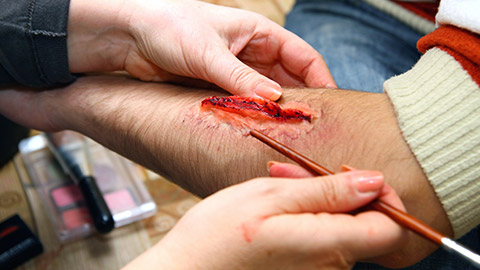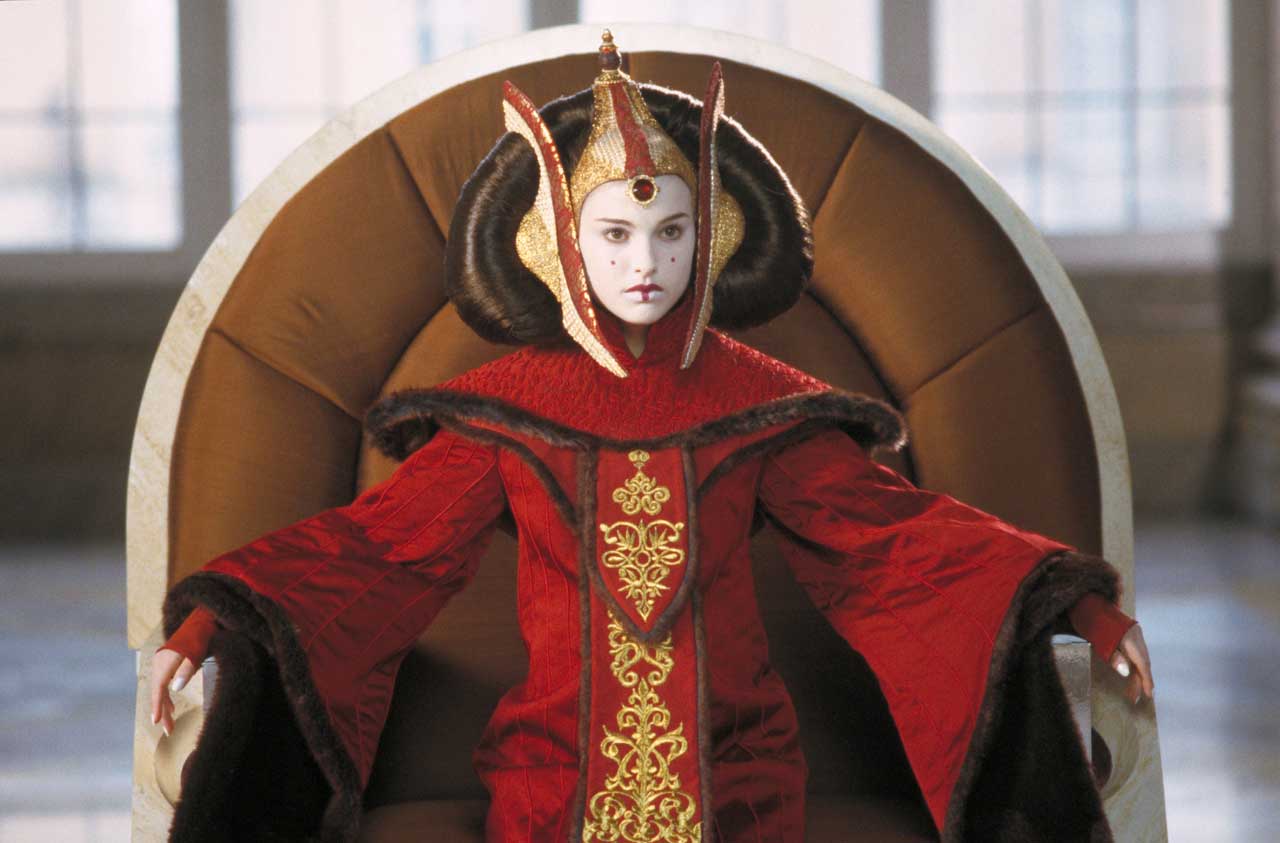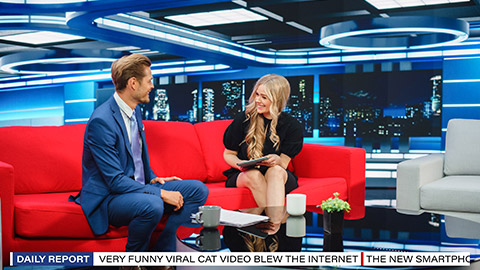'Many hands make light work' — and that is the case in the film industry. Let’s explore the many important roles that contribute to turning a vision into a masterpiece.
Do you ever wonder what goes on behind the scenes of making a movie? Who is involved? How does it all come together?
While every production is different, there are usually several people working behind the camera to ensure the writer's vision comes to life. The productions you do while taking this course will not require you to fill these roles, but you need to know who the people and roles are that create big-budget movies.
Crew departments
The following list provides a breakdown of each of the major crew departments, the most common positions within each, and the hierarchy.
| Directorial |
Director 1st Assistant Director 2nd Assistant Director 3rd Assistant Director Script Supervisor |
|---|---|
| Production |
Producer Executive Producer Production Manager Location Manager Production Assistants |
| Camera |
Director of Photography 1st Assistant Camera 2nd Assistant Camera Video Assistant |
|
Grip and Electric (G&E) |
Key Grip Best Boy Gaffer |
| Art |
Production Designer Art Director Costume Designer Makeup Artist Props Master Set Builder/Decorator |
| Sound |
Boom Operator Sound Recordist Sound Mixer Sound Assistant |
| Post |
Editor Editing Assistant Colourist Sound Designer Post-producer VFX Supervisor |

Producer
Who is the producer?
- CEO of a production company
- The owner of the film
- The 'money person'
- Decision maker
- Head of the project
Responsibilities:
- Administrate the project.
- Make sure the project meets the deadline.
- Get the right people for the project.
- Control money and time.
- Do what is best for the project.
- Make sure the project goes through all the stages of production in a healthy manner.
Art Department
Key people:
- Production Designer
- Art Director
- Props Master
- Costume Designer
- Makeup Artists
- Set Builder/Decorator
Key responsibilities:
- Plan a colour palette for the film together with the director and director of photography.
- Define a style and aesthetic for the film.
- Provide key visual elements that will help tell the story in a better way.
- Make the universe of the movie feel believable.
Wardrobe

Key people:
- Costume Designer
- Costume Coordinator
- Shopper
- Wardrobe Supervisor
- Tailors
Key responsibilities:
- Get clothes that will fit all talent in a comfortable way.
- Prepare all clothing to pass on the idea of an era.
- Design visual elements on the clothing that will help build the characters.
- Make sure all wardrobe is in order and that all characters have what's necessary to wear in all scenes.
- Keep track of continuity regarding the wardrobe.
The Makeup Crew
Key people:
- Makeup Artists
- SFX Makeup
- Modellers/Sculptors
- Character Artists
- Hairstylists
Key responsibilities:
- Make sure talent does not 'shine' on camera.
- Provide character customisation.
- Make sure all talent presents a constant look throughout the film.
The Props Department

Key people:
- Props Master
- Standby Props
- Props Maker
- Shopper
Key responsibilities:
- Help build characters using unique props and accessories.
- Keep track of all objects for continuity.
- Make sure all objects fit the era in which the film takes place.
- When working with weapons, make sure they are harmless yet believable.
The Sound Department
Key people:
- Boom Operator
- Sound Recordist
- Sound Mixer
- Sound Assistant
Key responsibilities:
- Recording all sound during filming.
- Choice of microphones, sound recording devices and mixing audio signals.
- Creating sound effects within the film (e.g. explosions).
- Creating sounds to generate mood and feeling.
- Manage the overall sound post-production process.
The Post-production Department

Key people:
- Editor
- Editing Assistant
- Colourist
- Sound Designer
- Post Producer
- VFX Artist
Key responsibilities:
- Oversee the entire post-production process.
- Edit the shots together into a coherent film.
- Work with the director to make sure their vision is realised.
- Work closely with the production accountant, supplying accurate information for cost. reports.
The key stages in taking a film from an initial idea through to watching it on the big screen are listed below.
Development
The start of a project varies, but generally, this will need to begin with the development of a script.
- Research
- Brainstorm
- Concept
- Scriptwriting
- Moodboards
Pre-production
Pre-production is where all the planning takes place before the camera rolls. It sets the overall vision of the project.
- Securing cast and crew
- Working out the shoot location
- Testing equipment
- Rehearsing
- Planning
- Storyboarding
- Planning
Production – filming
During this phase, planning ahead of the daily shoot is key. The primary aim is to stick to the budget and schedule. Communication is key between all parties involved. In addition to a storyboard with shot types, there would be two additional documents that we have introduced to you that would be vital to a safe and efficient shoot. Do you remember what they are? Come up with your answer before expanding the label below to check to see if you are right.
- Safety Worksheet
- Shot list
Post-production
The bulk of post-production activity consists of reviewing the footage and editing to assemble the movie.
- Backing up footage
- Organising the footage
- Editing
- Sound editing
- Colour correction
- VFX and motion graphics
- Exporting
Distribution
Once the film is completed, it must be distributed. This is how producers make their money. The film will go into the cinema and/or be distributed via various platforms such as Amazon Prime, Netflix and HBO. In order to reach this goal, they focus on the following process:
- Marketing
- Selling
- Presenting

Showing off Activity - Planning a segment of a magazine show
🕔 2 or 3 days in 3-4 hour sessions per day
Magazine shows offer audiences a chance to catch up on the latest news or find out what's trending and what movies to watch. In other words, they are a mishmash of news and entertainment. The one thing they do have is a consistent look and feel so that when they switch between segments, you don't wonder if you've accidentally flipped the TV channel.
Watch this video of a portion of Breakfast, New Zealand's early morning magazine show. What techniques do they use to engage the audience? Could you see any design features that connected edits from different locations? What else told you that the different segments were all from the same show?
Do you have some ideas about how you can plan out your segment?
As mentioned previously, collaboration is a vital skill to have in the creative arts. However, in this course, we're giving you an opportunity to imagine what that would be like without having to find the time in real life to work together.
For this activity, you'll come up with an idea for a segment of a magazine show. Be as creative as you like, but you'll need to ensure that your output can be put together with anyone else's output who used the same style guide as you, and no one would know the segments were made by different people.
Getting started:
- Download and open this PDF file of Style Guides.
- Select ONE of the three options.
- Flesh out your segment idea with a storyboard and shot list.
- Organise the talent, costumes, props, location and schedule to shoot.
- Complete a Safety Worksheet if you will be on location.
- Go forth and film.
- Bring your footage and supporting images into Premiere Pro.
- Use Illustrator and/or Photoshop to create graphics and bring them into Premiere Pro to use.
- Consider compositing, screen-in-screen, split screen, and background inserts to give your project a professional flair.
- Note: There is a size limit of 950MB for this activity.
You can pull together a crew to get this done, either by reaching out to peers in this class using Messaging, or ask whānau or friends to help out or do it all yourself.
Take your time on this project, as it will help you get ready for the assessment. It may take a week or even two. Have fun!
Forum Post
When you are done, create a Forum post and upload your exported video. Save it so your peers and tutor can watch it.
Include answers to these questions:
- Do you understand why you have been assigned this activity?
- What skills did you learn working on this project?
- How could you have improved your workflow process?
- Are you pleased with your output?
- Did you stick to the Style Guide?
- If so, did you find that a challenge, or did you find it helpful to have parameters around your work?
- If not, why not?
- Would you do anything differently if you started again?
You've earned a break. Enjoy these previous student submissions. These students were offered the option of creating a commercial that may appear within the show, which is exactly what they did.
1. CARS! CARS! CARS!
2. Todd Doll Infomercial
Finally, we thought you might enjoy this submission, though it might not fit so easily in any magazine show.
Ka pai for completing another Showing off activity! Good luck with your assessment - have fun with it.